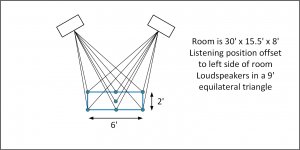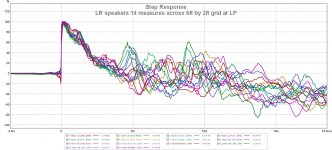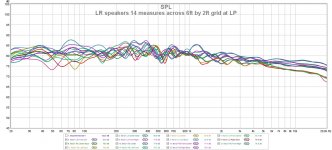Hey guys,
I have read quite a few papers and discussions on DIY and commercial speaker designs, but they seem to take wide steps to avoid discussing how they accomplished both time (impulse) alignment and phase alignment in the same speaker design.
What they've written:
Time (impulse) alignment can be accomplished by introducing signal latency and/or moving the high-frequency driver(s) rearward in relation to the lower-frequency drivers. This way, the starting point of each driver compliments the other to produce proper transients. I still haven't found what this does to the vertical polar response.
What they've written:
Linear phase speakers offer a relatively flat (unwrapped) phase response over the intended bandwidth. The reduced group delay distortion from the low phase shift results in musical harmonic content arriving in its proper timing sequence.
My questions:
Are these explanations correct?
How are time/impulse aligned and linear phase accomplished in the same loudspeaker?
I have read quite a few papers and discussions on DIY and commercial speaker designs, but they seem to take wide steps to avoid discussing how they accomplished both time (impulse) alignment and phase alignment in the same speaker design.
What they've written:
Time (impulse) alignment can be accomplished by introducing signal latency and/or moving the high-frequency driver(s) rearward in relation to the lower-frequency drivers. This way, the starting point of each driver compliments the other to produce proper transients. I still haven't found what this does to the vertical polar response.
What they've written:
Linear phase speakers offer a relatively flat (unwrapped) phase response over the intended bandwidth. The reduced group delay distortion from the low phase shift results in musical harmonic content arriving in its proper timing sequence.
My questions:
Are these explanations correct?
How are time/impulse aligned and linear phase accomplished in the same loudspeaker?
Hi Art,
The first is what I know as "time co-incident." That is, the starting edge of all drivers is in the same place in time. As Bill Waslo points out often, it only works in 1 point in space unless you are using a co-axial speaker. Move vertically off axis and it's gone.
Look at the impulse of this Vandersteen model seven which is time-coincident. All three drivers start at the same time and create a single triangular impulse:
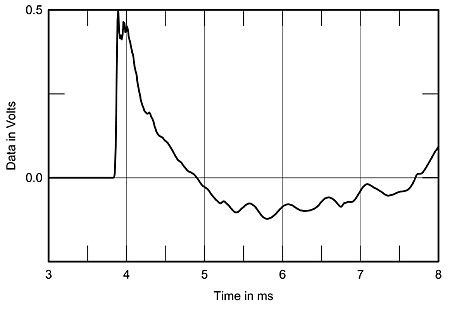
Vs. this one from a Monitor Audio Platinum II which is not (but still a very good speaker). You can see the three drivers start at different times and they do not create a single impulse.
The tweeter starts downwards and ahead of the midrange, which is also going downwards, followed finally by the positive large, broad and slow woofer:
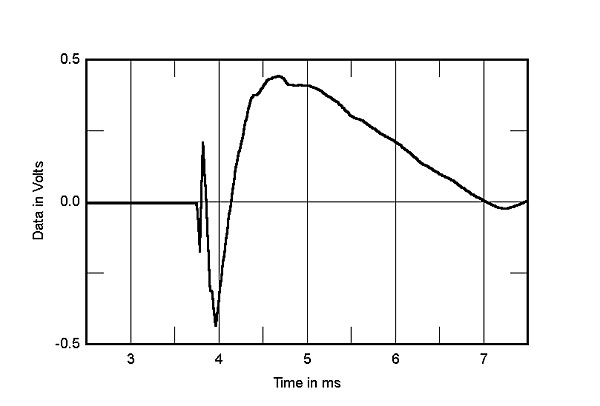
Also please note that having a stepped baffle is no guarantee of time-coincident but it is often required.
Using a stepped baffle can solve issues around number of crossover poles used to achieve perfect phase alignment (not the same thing, any commercial speaker should have good phase alignment) but is no guarantee of a coincident leading edge.
Credits for both images go to Stereophile.
The first is what I know as "time co-incident." That is, the starting edge of all drivers is in the same place in time. As Bill Waslo points out often, it only works in 1 point in space unless you are using a co-axial speaker. Move vertically off axis and it's gone.
Look at the impulse of this Vandersteen model seven which is time-coincident. All three drivers start at the same time and create a single triangular impulse:

Vs. this one from a Monitor Audio Platinum II which is not (but still a very good speaker). You can see the three drivers start at different times and they do not create a single impulse.
The tweeter starts downwards and ahead of the midrange, which is also going downwards, followed finally by the positive large, broad and slow woofer:

Also please note that having a stepped baffle is no guarantee of time-coincident but it is often required.
Using a stepped baffle can solve issues around number of crossover poles used to achieve perfect phase alignment (not the same thing, any commercial speaker should have good phase alignment) but is no guarantee of a coincident leading edge.
Credits for both images go to Stereophile.
Last edited:
Subjectively, I have heard Jim Thiel designed Thiels, and I have heard Vandersteens. Neither had the tonal balance for me, and nothing I heard about their imaging or presentation made me a convert to time-coincident designs.
Please, build, buy and listen to what you like. I'm just saying that my experience didn't move me the way it has others.
Best,
E
Please, build, buy and listen to what you like. I'm just saying that my experience didn't move me the way it has others.
Best,
E
Thanks for you input, erikaquires. I heard Vandersteens and they did nothing for me, either. I wanted to try my hand at it and have control over the frequency response with digital signal processing to see if FR or driver selection was the issue there.
The first image shows exactly what I expected for impulse aligned speakers, and the second being usual flat baffle speakers. Thank you for the confirmation and explanation.
The first image shows exactly what I expected for impulse aligned speakers, and the second being usual flat baffle speakers. Thank you for the confirmation and explanation.
Thanks for you input, erikaquires. I heard Vandersteens and they did nothing for me, either. I wanted to try my hand at it and have control over the frequency response with digital signal processing to see if FR or driver selection was the issue there.
The first image shows exactly what I expected for impulse aligned speakers, and the second being usual flat baffle speakers. Thank you for the confirmation and explanation.
Let's not forget waterfall plots, too. That's an aspect of speaker design that isn't always optimized as well as it might be.
And of course, linear phase FIR filtering can produce pre-ringing, depending.
Frequency response is easy to measure, however, and some people say that things which are easy to measure may tend get more than their fair share of attention.
I still have my Spica TC-50s, which were time aligned, and these image extremely well. Unfortunately they lack bass. I also liked the Thiel speakers I heard in their day. Never liked the Vandys though. But these three were the rage in the time.
In the 80's I was working as recording/mixing engineer and hearing the Urei 813 "time align" monitors for the first time. Sounded different to my ears. With a mic in the studio and listening to the stereo pair, the sound was dead center - point source sound. Good references at the end of: Loudspeaker time alignment - Wikipedia
Flash forward today I use DSP software to generate linear phase digital XO FIR filters to time align drivers with a high degree of accuracy and precision (no preringing either). To my ears, makes an audible difference and worth the effort. Example article: Advanced Acourate Digital XO Time Alignment Driver Linearization Walkthrough - CA Academy - Computer Audiophile
Wrt time alignment only valid at one point in space is not true. I took 14 measures of time aligned 3 way speakers across a 6' x 2' grid at the listening area and the time alignment did not change. Details and measurements in my sig.
Flash forward today I use DSP software to generate linear phase digital XO FIR filters to time align drivers with a high degree of accuracy and precision (no preringing either). To my ears, makes an audible difference and worth the effort. Example article: Advanced Acourate Digital XO Time Alignment Driver Linearization Walkthrough - CA Academy - Computer Audiophile
Wrt time alignment only valid at one point in space is not true. I took 14 measures of time aligned 3 way speakers across a 6' x 2' grid at the listening area and the time alignment did not change. Details and measurements in my sig.
Hi Mitchba,
Thank you very much for your contributions, especially regarding time alignment over space.
I'm curious though, could it be your sense of a dead-center image was more due to perfectly matched FR?
Best,
E
Thank you very much for your contributions, especially regarding time alignment over space.
I'm curious though, could it be your sense of a dead-center image was more due to perfectly matched FR?
Best,
E
Wrt time alignment only valid at one point in space is not true. I took 14 measures of time aligned 3 way speakers across a 6' x 2' grid at the listening area and the time alignment did not change. Details and measurements in my sig.
Well, if you move the microphone back far enough everything would (not) be true. 🙂
If your microphone is at a typical measuring distance (like say 1 meter) and the drivers are not coincident, it's physically impossible to maintain time alignment when moving the microphone off axis. This is especially true in the vertical direction because most speaker systems arrange the drivers on a vertical line.
Dave.
It takes a lot more than putting the drivers' voice coils in a line to get a linear phase (that nice triangular step) response. The crossover has to be done in special ways, usually such that the slopes are quite gradual (though there are ways to do it with sharper slopes, particularly with DSP). It is often stated that a first-order crossover (a simple series capacitor or inductor) will give you linear phase, but usually it won't since the drivers already start out with numerous poles of rolloff that keep the overall response from being first order.
An equalized single-driver speaker could be pretty much linear phase, but HF cone breakup and LF excursion limitations pretty much limit how much practical eq can really be applied. Plus single-driver "full-range" guys often pooh-pooh having any electronic components inline with that driver.
An equalized single-driver speaker could be pretty much linear phase, but HF cone breakup and LF excursion limitations pretty much limit how much practical eq can really be applied. Plus single-driver "full-range" guys often pooh-pooh having any electronic components inline with that driver.
I've been a fan of time alignment.
I've had theil model 04 and cs2, both were great within their limits.
Now I'm using woofer wide open and single capped tweeter.
Tweeter is slid back for alignment (step response).
Dunlavy Audio Labs SC-IV/A loudspeaker | Stereophile.com
Loudspeaker designer John Dunlavy: By the Numbers... | Stereophile.com
I've had theil model 04 and cs2, both were great within their limits.
Now I'm using woofer wide open and single capped tweeter.
Tweeter is slid back for alignment (step response).
Dunlavy Audio Labs SC-IV/A loudspeaker | Stereophile.com
Loudspeaker designer John Dunlavy: By the Numbers... | Stereophile.com
Frazier's White Paper on their CAT40 and related
http://www.frazierspeakers.com/download/coax.pdf
3. HF driver in front of woofer cone, with HF horn centered in LF horn. This configuration can achieve signal alignment
with no electronic delay applied to either element, and the problems associated with this layout are minor and soluble, given
sufficient insight into acoustics. This is the configuration we have chosen for our CAT 40 CAT 50 product families.
CAT40 (mine have a rectangular horn)

http://www.frazierspeakers.com/download/coax.pdf
3. HF driver in front of woofer cone, with HF horn centered in LF horn. This configuration can achieve signal alignment
with no electronic delay applied to either element, and the problems associated with this layout are minor and soluble, given
sufficient insight into acoustics. This is the configuration we have chosen for our CAT 40 CAT 50 product families.
CAT40 (mine have a rectangular horn)

I my both sets are time alinged and linear phased. Secondary as 6.5" full range and primary 4-way active thru lake processor
Hi Erik, for sure the matched left and right FR helps, but there is a time component as well for point source sound. I.e. does the point source center image sound appear between the speakers, in front, behind, or blurred due to the different time arrivals of each driver...
When I was mixing multitrack recordings, digital delay and reverb is used to give the mono-mic’d instrument width and depth. This is more than pan pot mixing, this is placing an instrument in a stereo sound stage, giving it the sense of location and depth. The science behind it is the Haas effect. Precedence effect - Wikipedia Here is a quick demonstration on how a short delay can give an instrument the sense of location: YouTube
The same can be said for sound reproduction. A good article on what our ears care about in small room acoustics from JJ Johnston: AES PNW Meeting Report - Acoustic and Psychoacoustic Issues in Room Correction The power point has the details, but a couple of key take aways are it is the first arrival of sound (i.e. precedence effect) that our ears perceive the timbre (i.e. tone quality) and “The precedence effect, where the brain discounts arrival of signals after the first, helps. The first arrivals also are the primary cue for binaural localization, with the uncorrelated late arrivals sensed as "envelopment. You need to equalize gain and delay from each speaker just for the first arrival, which locks in the spatial cues.”
I use steep slope Neville Thiele linear phase digital XO, and in the CA article I referenced above, shows this type of crossover sums perfectly in the time and frequency domain. I also linearized each driver in the near field, which can change its timing response, then time aligned each driver, with the measurement mic at the listening position. Finally, some overall frequency response shaping is applied, using frequency dependent windowing and psychoacoustic filtering, along with some excess phase correction. It does take some tech and technique applied to get this level of performance.
Putting it all together and measuring both left and right speakers at several locations around the listening area:

Step response:

This shows that regardless of location, all sound from the 3 way arrives at the mic at the same time. i.e. time aligned. The differences around 5ms and beyond are the reflections from the rear wall entering into the mic. Based on the precedence effect, our ears care about the first arrival of sound the most. I experimented moving the mic height a foot above and below listening height and measured similar results.
Corresponding frequency response at each of the locations:

In my listening tests, I can AB FIR filters in JRiver's convolution engine. I can switch in one that has the drivers time aligned and one that does not, in real time while listening to music. I can tell the difference fairly easily, once one knows what to listen for. Both sound good, same timbre, but without time alignment, the depth of field sounds 2D, while time aligned sounds 3D, is the best subjective description I can give it.
Anyway, I hope folks find the links useful and if interested give it a try.
Kind regards, Mitch
When I was mixing multitrack recordings, digital delay and reverb is used to give the mono-mic’d instrument width and depth. This is more than pan pot mixing, this is placing an instrument in a stereo sound stage, giving it the sense of location and depth. The science behind it is the Haas effect. Precedence effect - Wikipedia Here is a quick demonstration on how a short delay can give an instrument the sense of location: YouTube
The same can be said for sound reproduction. A good article on what our ears care about in small room acoustics from JJ Johnston: AES PNW Meeting Report - Acoustic and Psychoacoustic Issues in Room Correction The power point has the details, but a couple of key take aways are it is the first arrival of sound (i.e. precedence effect) that our ears perceive the timbre (i.e. tone quality) and “The precedence effect, where the brain discounts arrival of signals after the first, helps. The first arrivals also are the primary cue for binaural localization, with the uncorrelated late arrivals sensed as "envelopment. You need to equalize gain and delay from each speaker just for the first arrival, which locks in the spatial cues.”
I use steep slope Neville Thiele linear phase digital XO, and in the CA article I referenced above, shows this type of crossover sums perfectly in the time and frequency domain. I also linearized each driver in the near field, which can change its timing response, then time aligned each driver, with the measurement mic at the listening position. Finally, some overall frequency response shaping is applied, using frequency dependent windowing and psychoacoustic filtering, along with some excess phase correction. It does take some tech and technique applied to get this level of performance.
Putting it all together and measuring both left and right speakers at several locations around the listening area:
Step response:
This shows that regardless of location, all sound from the 3 way arrives at the mic at the same time. i.e. time aligned. The differences around 5ms and beyond are the reflections from the rear wall entering into the mic. Based on the precedence effect, our ears care about the first arrival of sound the most. I experimented moving the mic height a foot above and below listening height and measured similar results.
Corresponding frequency response at each of the locations:
In my listening tests, I can AB FIR filters in JRiver's convolution engine. I can switch in one that has the drivers time aligned and one that does not, in real time while listening to music. I can tell the difference fairly easily, once one knows what to listen for. Both sound good, same timbre, but without time alignment, the depth of field sounds 2D, while time aligned sounds 3D, is the best subjective description I can give it.
Anyway, I hope folks find the links useful and if interested give it a try.
Kind regards, Mitch
Attachments
How are time/impulse aligned and linear phase accomplished in the same loudspeaker?
If you care to experiment with pcd ( passive crossover designer) then you will find your answers. A perfectly good sounding loudspeaker that is flat on axis, now time aligned by introducing additional delay to tweeter will alter the spl summation at a crossover point to something that would be considered fundamentally flawed but with better looking step response because now the two step response peaks are closer together appearing to be as one. The question is what might sound better to you.
Dr. Joseph D'Appolito gave an interview to a German DIY magazine where he was asked about time alignment and he said that he prefers good frequency summation at a measurement point of interest much more than having drivers aligned for a better looking step response, or something in that sense.
Thanks for all the links, Mitchba!
So, all measurements on same horizontal plane?
Also, that is a very nice listening room, based on the impulse and reflections, I wish I had something close to that here. 🙂
Best,
E
So, all measurements on same horizontal plane?
Also, that is a very nice listening room, based on the impulse and reflections, I wish I had something close to that here. 🙂
Best,
E
...the depth of field sounds 2D, while time aligned sounds 3D, is the best subjective description I can give it...
Interesting. It is the same criteria i use to tell a stock FR from an EnABLed one in blind tests.
dave
Went looking for the filters, and I found a very worthwhile read here:
Digital XO (Theory) | Digital Room Correction
Best,
E
Digital XO (Theory) | Digital Room Correction
Best,
E
I still haven't found what this does to the vertical polar response.
my "spot" is 40-50cm tall, out of that area for its +/-1cm delay for tweeter

latest measurement from right channel, 5ms window.
125, 380 and 5000hz xo points
Thanks a bunch, guys. There are some great sources of information and opinions here. I had a very basic overview of time-alignment and linear-phase, but not enough to bring them together. It will take learning through PCD 7 and I'm going to get a copy of Accurate Sound Reproduction Using DSP by Mitch Barnett.
A question: If a tweeter and mid-woofer and time aligned beforehand, should they both be wired in the same polarity, or should the tweeter be wired with opposite polarity (like conventional non-time aligned speakers)?
A question: If a tweeter and mid-woofer and time aligned beforehand, should they both be wired in the same polarity, or should the tweeter be wired with opposite polarity (like conventional non-time aligned speakers)?
- Status
- Not open for further replies.
- Home
- Loudspeakers
- Multi-Way
- Explanation of Time Aligned and Linear-Phase?
